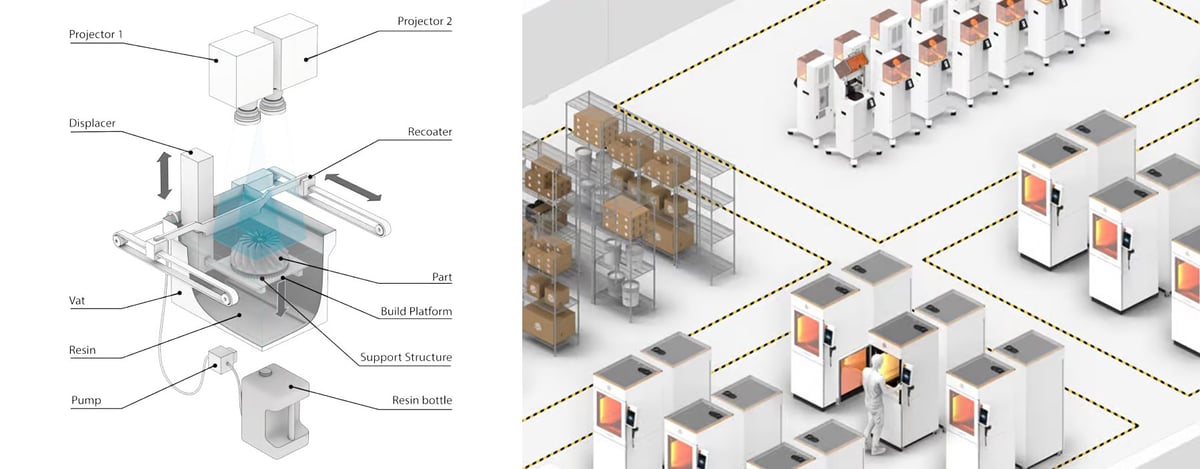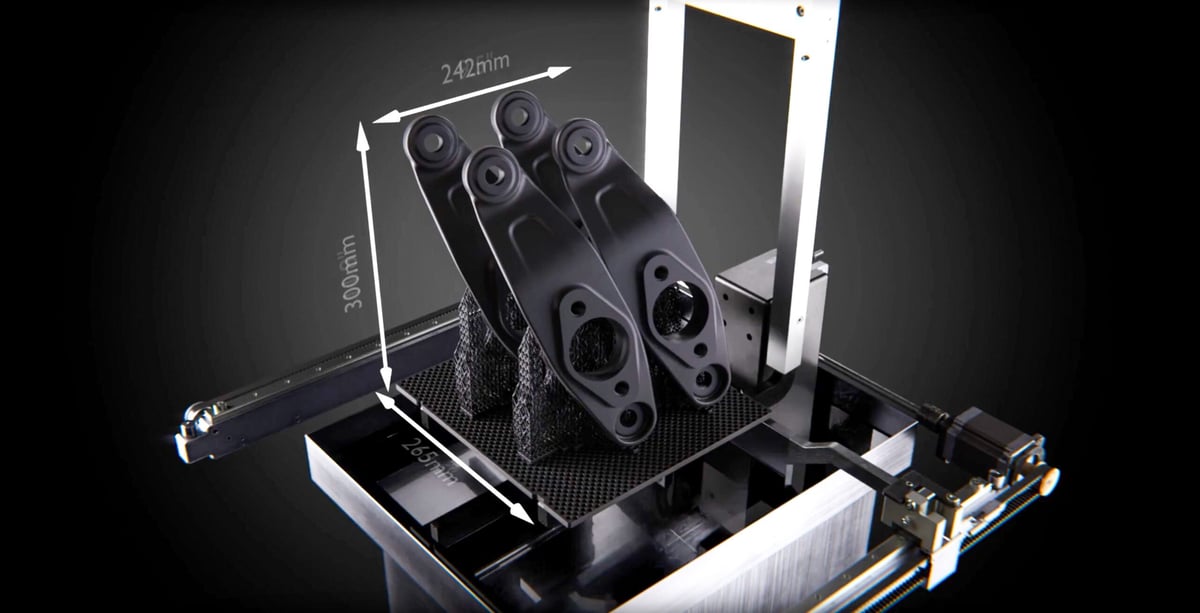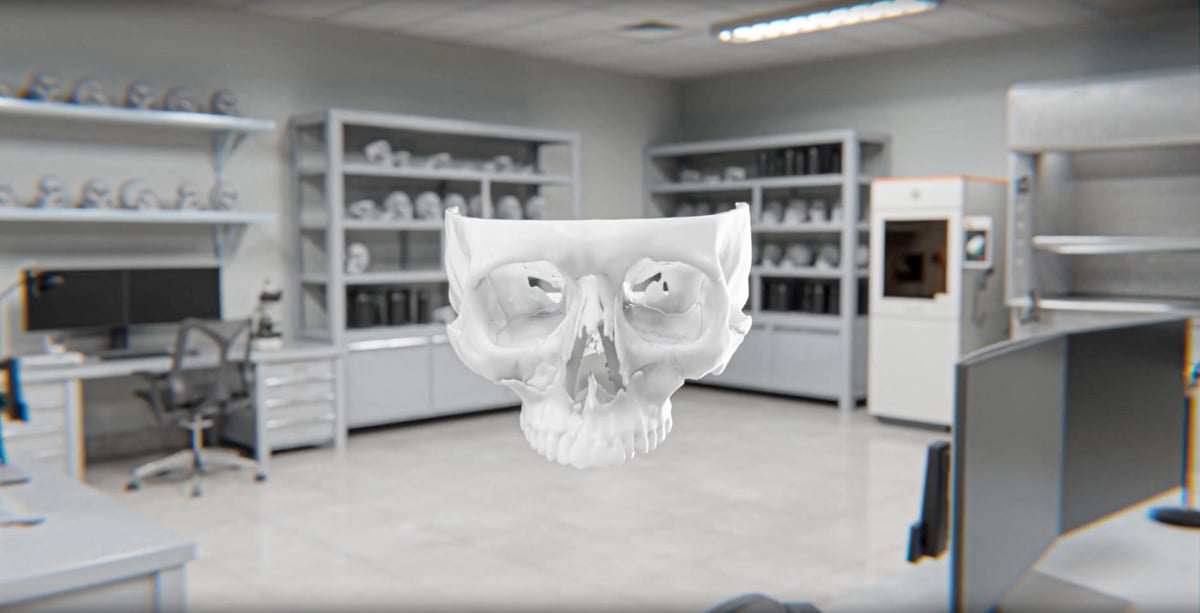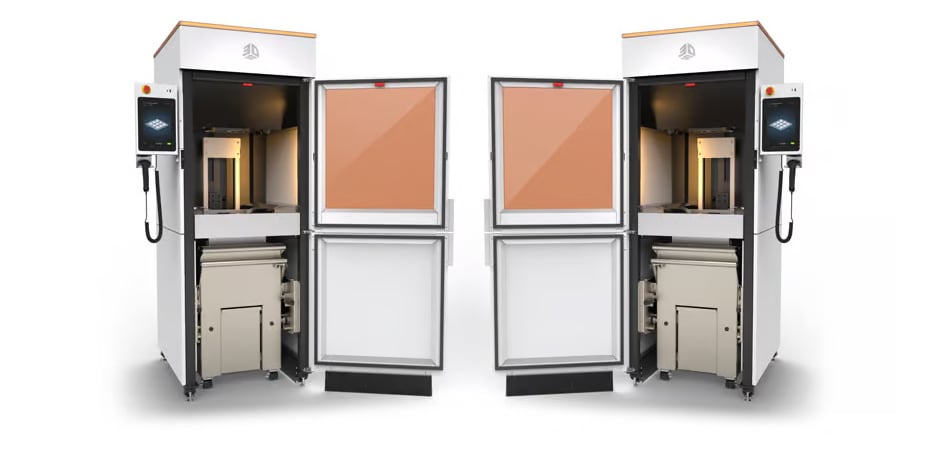Last year, at Formnext 2023, we noticed 3D Systems’ new industrial resin printer standing off to the side of the company’s booth. Representatives were very short on details leaving us until this past June to learn more about the PSLA 270, which will be again at Formnext (Booth D11, Hall 11.1), but this time, in the spotlight.
The PSLA 270 is the company’s “fastest, most versatile, resin printer yet,” it says, producing parts in hours not days.
3D Systems is playing a little fast and loose with tech terminology here, so let’s clear that up first. SLA is short for stereolithography, which is a type of vat polymerization or resin 3D printing technology. An SLA 3D printer is one that uses lasers to trace out each layer of the object being printed. In fact, Chuck Hull, who is credited with inventing SLA 3D printing founded 3D Systems. PSLA or “projector-based SLA” is a new term 3D Systems made up to describe the use of a light projector instead of lasers.

Yet, resin 3D printing with light projectors already has a name: digital light processing (DLP). So 3D Systems’ new PSLA 270 is a DLP 3D printer, which is a technology that’s faster than laser-based SLA technology since it projects a single image of each layer all at once (or multiple flashes for larger parts) on a layer of resin instead of tracing out points with a laser.
Now that we have that cleared up, let’s take a closer look at where the PSLA 270 fits among 3D Systems other resin solutions.
3D Systems Family of Resin 3D Printers
Below, we take a look at some (not all) of 3D System’s resin 3D printers. There’s four configurations available in the Figure 4 range of DLP 3D printers and four laser-based SLA 3D printers. The company also makes selective laser sintering (SLS), material jetting, fused deposition modeling (FDM), and metal laser powder bed fusion (M-LPBF) 3D printers.
The PSLA 270 is indeed the company’s fastest resin 3D printer. 3D Systems doesn’t provide technical data in the same format for all of its machines, so comparisons are not simple, but the PSLA 270 appears to have a lower resolution (although still very high) than the slower Figure 4 series machines, while accuracy is lower than the company’s other laser-based 3D printers. Speed always comes at a compromise.

Other features designed for a production environment include the quick-swap, roll-out material chambers, so you can, theoretically, have one material chamber loaded and ready to go as soon as the first is finished so there’s no waiting to clean out one material from the vat. This mobile cart accommodates a variety of material vat sizes and keeps the elevator, displacer, and recoater nested with the vat of resin that they are used with — one cart is simply exchanged for another and all the necessary components come with it. There’s also a large 55-liter resin tank for volume printing.
Regarding mechanical configuration, the PSLA 270 is a “top down” resin 3D printer which is meant to reduce gravity-based distortion and peeling on bulky parts with large cross-sections. Top-down also means the parts are fully submerged in the material during printing, which calls for fewer support structures, resulting in better surface finishes. (ETEC Xtreme 8K from Desktop Metal is another top-down DLP resin printer.)

Materials & Software
The PSLA 270 is designed to operate with the same range of resins available for the company’s other DLP 3D printers, the Figure 4 range, which includes rigid, tough, and durable materials with thermoplastic-like behaviors, castable, heat resistant, and biocompatible capable materials in a range of colors and translucencies.
Features you’d expect include a touch screen display providing a step-by-step workflow for the full print process, material changes, and printer calibration; and an HD camera so you can remotely start or oversee print progress.
When it comes to software, the PSLA 270 uses 3D Sprint, a single-interface software for file preparation, editing, printing, and management. 3D Sprint is optimized for production environments with the “latest time-saving workflows, UI, and UX,” the company says, to maximize printer capacity and build volume utilization for batch run jobs.

PSLA 270 Tech Specs
- Technology: Digital Light Processing (DLP)
- Build Volume: 242 x 265 x 300 mm
- Light Engine: 2 x 7-watt, 90 µm combined 3840 x 2160 dpi
- Resin Wavelength: 405 nm
- Resolution: 90 µm pixel size
- Accuracy: +/- 100 µm < 25 mm, +/- 0.2% > 25 mm
- Layer Thickness: 50-150 µm (material dependent)
- Max. Speed: 38 mm / hour (material dependent)
- Vat Capacity: 55 L
- Price: 3D Systems is not releasing a price. When we proposed maybe “$225,000 – $300,000”, the company said that was “wildly wrong” so it’s likely more in the range of the company’s SLA 750 Dual which starts around $425,000.
You May Also Like:
License: The text of "Check Out 3D Systems’ New PSLA 270 at Formnext 2024" by All3DP Pro is licensed under a Creative Commons Attribution 4.0 International License.


